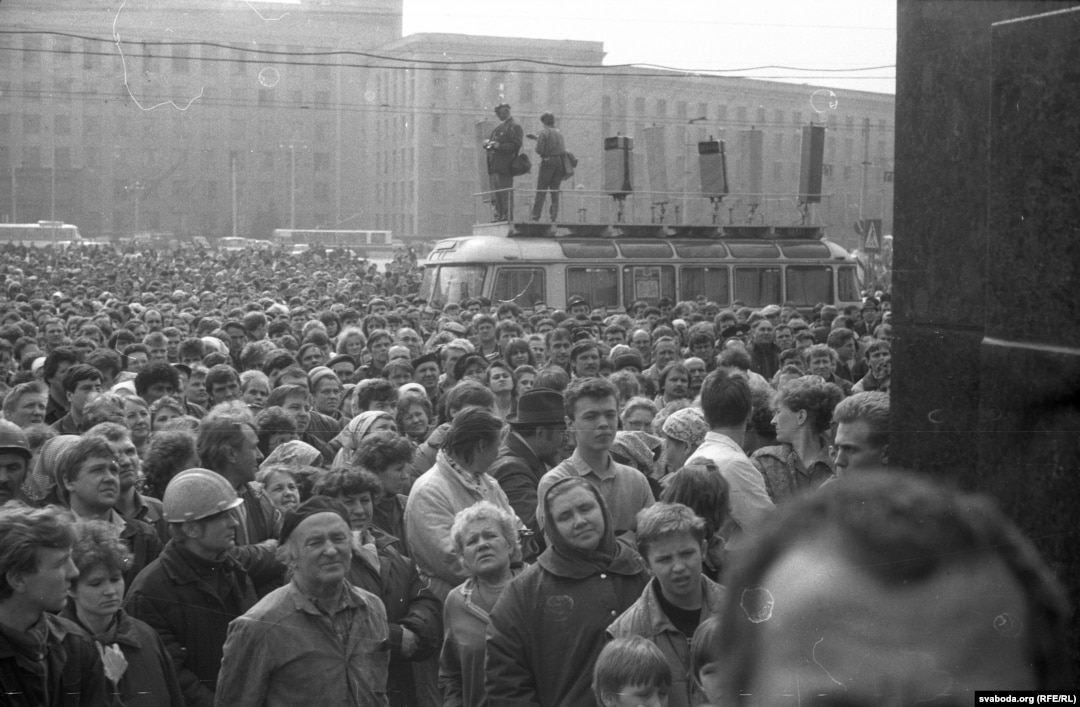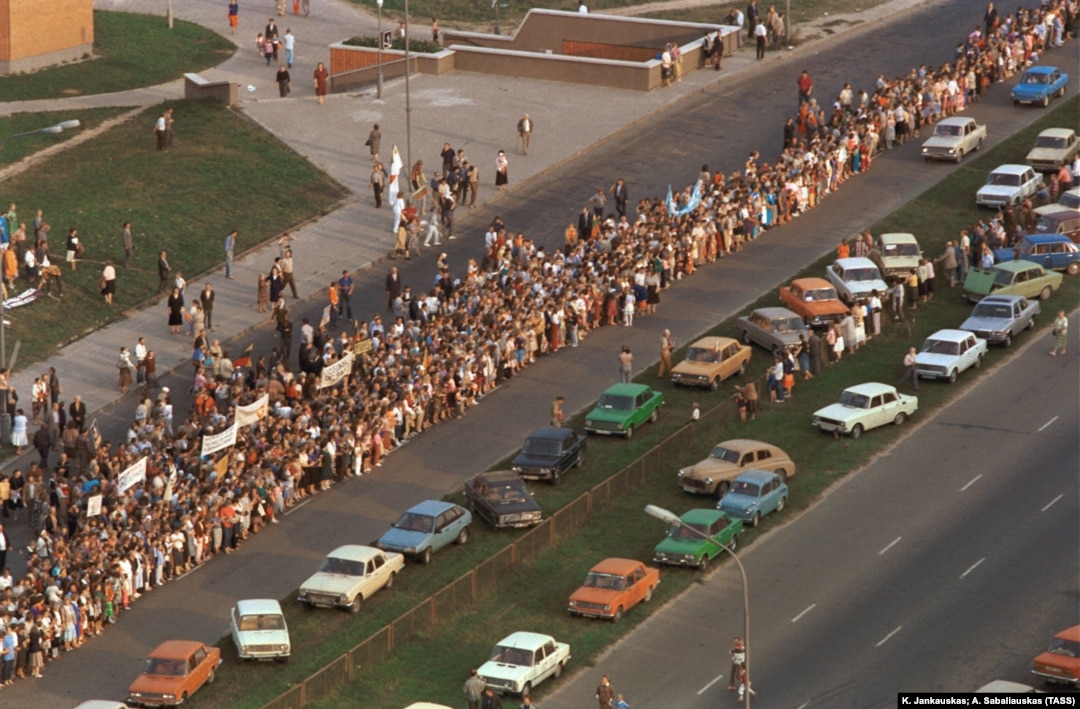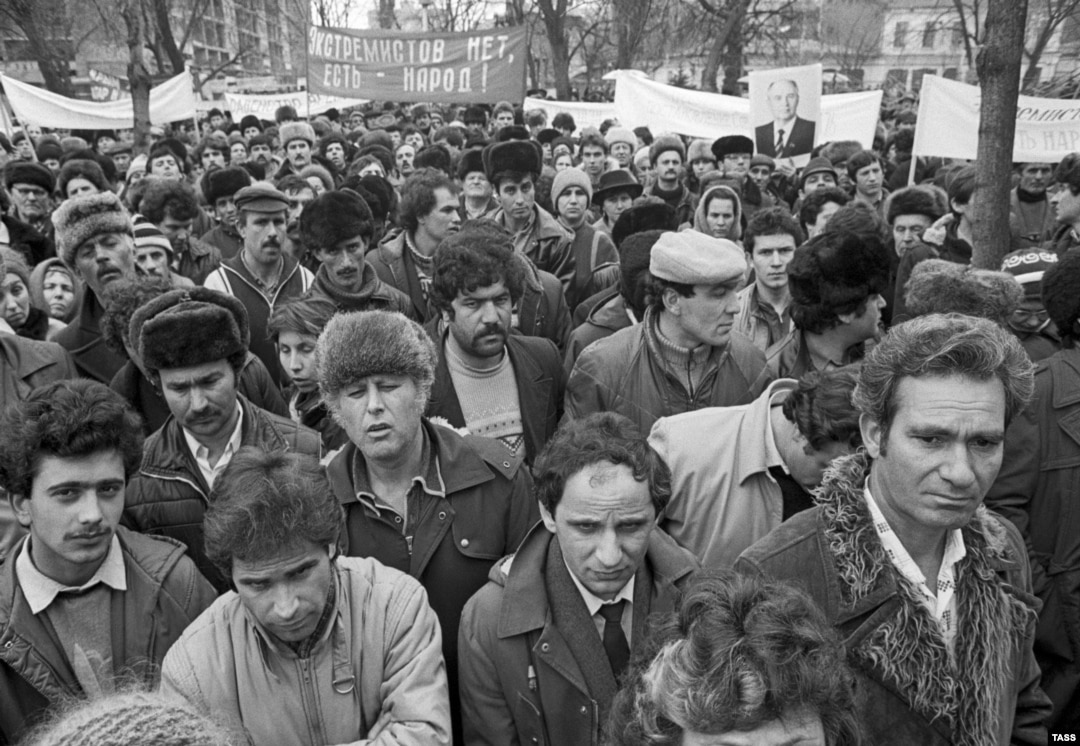The Protests That Brought The Soviet Union To Its Knees

Thousands of workers rallied on Minsk's Lenin Square in April 1991. The protesters were unhappy with the increased cost of consumer goods and the Communist Party's control of the republic.

On August 23, 1989, an estimated 2 million people joined arms across Lithuania, Latvia, and Estonia in a protest against Soviet rule that became known as the "Baltic Way" or "Baltic Chain." In Vilnius (pictured), participation in the human chain was preceded by pro-independence rallies.

Crimean Tatars in Krasnodar, southern Russia, demanded that they be allowed to return to their homeland. The gathering was the first nationwide protest to be reported by the Soviet press, on March 6, 1988. Tatars were deported from Crimea en masse during World War II, after Stalin accused them of collaborating with Nazi Germany.

A rally organized by the Popular Front of Moldova in June 1989, demanding that Moldovan be recognized as the state language.
A demonstration in Kyiv in October 1989, organized by the People's Movement of Ukraine (Rukh).
On January 21, 1990, hundreds of thousands of Ukrainians formed a human chain from the western city of Lviv to Kyiv to mark the anniversary of the signing of the Unification Act in 1919, which aimed to unify the Ukrainian People's Republic and the West Ukrainian People's Republic into a single Ukrainian state.
A Georgian Army soldier dances on a square in Tbilisi on April 10, 1991, after the republic declared independence from the Soviet Union.
Protesters rally on February 15, 1990, on Lenin Square in Dushanbe, following bloody riots as Islamists emerged on the political scene. Two years later, the fledgling country of Tajikistan was embroiled in a bloody civil war that claimed tens of thousands of lives before its end in 1997.
A symbolic funeral for the U.S.S.R., organized by the Union of Independent Ukrainian Youth, is held in Kyiv on September 30, 1990.
A rally of the People's Movement of Ukraine (Rukh) on September 30, 1990, demanding independence from the Soviet Union.
Tanks on Kalininsky Prospekt in Moscow during the August 1991 coup. Between August 19 and 22, a group of communist hard-liners attempted to overthrow Soviet President Mikhail Gorbachev and roll back democratic reforms. Thousands of Muscovites rallied to oppose the plotters and the coup foundered.
A rally in support of Moldova's declaration of independence on August 27, 1991.
A resident of Baku tears down a portrait of Lenin on September 21, 1991, nearly a month after Azerbaijan's declaration of independence at the end of August.
Tajik protesters in October 1991 demand the speaker of parliament, Rahmon Nabiev, step down to provide equal opportunity for all candidates in the presidential election scheduled for November 24, 1991.
A woman protests on January 13, 1991, against the seizure of the TV tower in Vilnius by Soviet troops. Lithuania had declared independence from the Soviet Union 10 months earlier. The day became known as Bloody Sunday, with 14 Lithuanians killed and more than 1,000 injured defending the city against Soviet forces.

